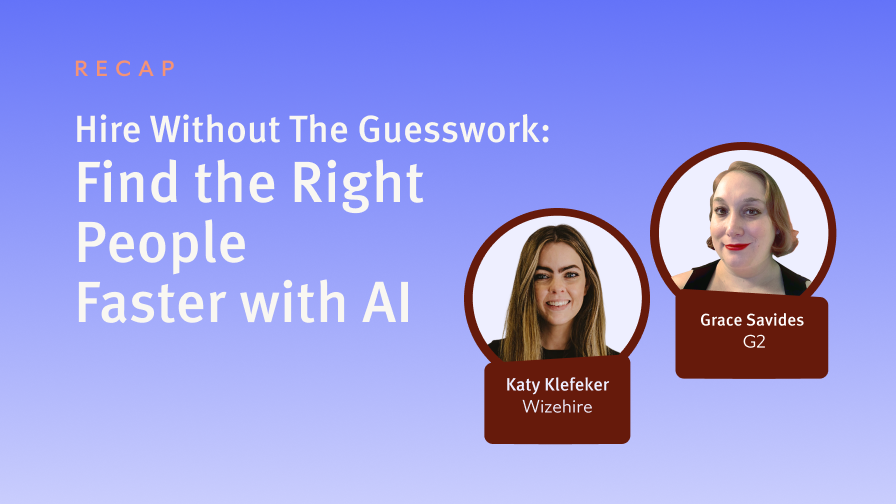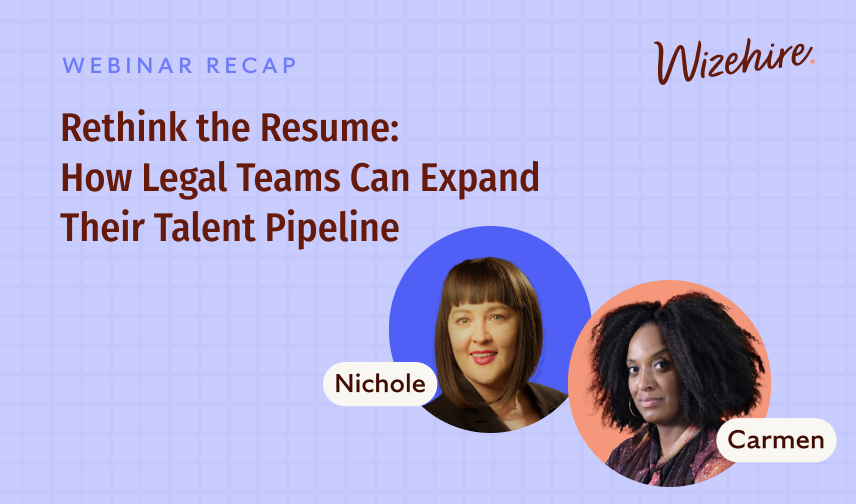Table of Contents
Summary
Small and growing businesses are hiring in a noisy market with limited time and resources. This webinar breaks down what’s changing with AI, what’s working today, and where to focus so you can move faster, cut busywork, and make more confident hires. The panel covered market trends from G2, practical day-to-day advice from customer conversations, and a sneak peek at how Wizehire is using AI to help you act quickly without losing the human touch.
Key Takeaways
- Quality over quantity starts at the job post. Write to the person you want to hire—benefits, culture, and growth—not just a list of tasks. You’ll attract better fits and save time later.
- Act fast. In today’s market, speed is an advantage. Call promising candidates quickly even if every box isn’t checked—learn more in conversation.
- Candidate matching is the AI feature to watch. Tools that surface best-fit applicants (from resumes, interviews, and past pipelines) help teams cut through the noise.
- AI can help reduce bias when it’s well-designed and audited. Use structured scorecards and human-in-the-loop reviews to keep decisions fair and consistent.

“Candidate matching is by far the number one feature we’re seeing adopted. Employers want help finding the right fit quickly, whether that’s from resumes, interviews, or deeper insights like culture fit.”
– Grace Savides, Senior Analyst, G2
Highlights from the discussion
- Market snapshot (G2)
AI adoption is accelerating, especially in candidate matching—tools that read resumes, screening answers, and even interview transcripts to rank fit. Interview-focused features are growing fast (guided questions, auto-scorecards, transcripts), helping teams compare candidates consistently and reduce “gut-feel” bias. Job seekers are also using AI (resume tailoring, job sourcing, mass outreach), so employers need structured, objective evaluation to keep pace.
2. What SMBs can do right now (Wizehire customer view)
- Tighten the job description. Speak directly to your ideal hire’s motivations (stability, schedule, growth). That clarity improves applicant quality and cuts screening time.
- Prioritize speed to first touch. A quick call beats weeks of back-and-forth. You won’t have every answer upfront—use the conversation to qualify.
- Work your existing talent. Before you open a new funnel, revisit past applicants and silver-medalists; they’re warm, known, and often faster to hire.
3. Adoption & trust
AI can feel threatening without guidance. Set simple policies, show where AI helps (screening, scheduling, reminders), and keep a human in the loop. Transparency about how recommendations are made builds buy-in across the team.
4. Fairness, compliance, and confidence
Structured scorecards reduce bias and make decisions repeatable. Pair them with tools that explain why a candidate is a match (e.g., which resume lines or interview answers support the score). Clear rationale helps with internal alignment and evolving regulations.
5. What’s coming from Wizehire
- Smarter matching controls. Define must-haves and see how each requirement changes your reachable talent pool.
- “Show the work” transparency. AI highlights the exact resume or interview evidence behind each match so you can trust—and verify—recommendations.
- Talent Pool Matches. Recommendations from your own historical applicants, with one-click invites to apply to new roles.
- Scout, Wizehire’s AI recruiting assistant. Behind-the-scenes help with follow-ups, interview scheduling, and reminders to reduce missed connections and keep top candidates moving.
How to put this into practice
- Focus your job posts. Write with your ideal hire in mind to attract quality candidates from the start.
- Act quickly. Reach out to promising applicants right away—speed is your advantage in a competitive market.
- Use AI where it helps. Let matching, scheduling, and reminders handle the busywork so you can focus on interviews and team fit.
- Leverage your talent pool. Don’t overlook past applicants; your next great hire may already be in your pipeline.






